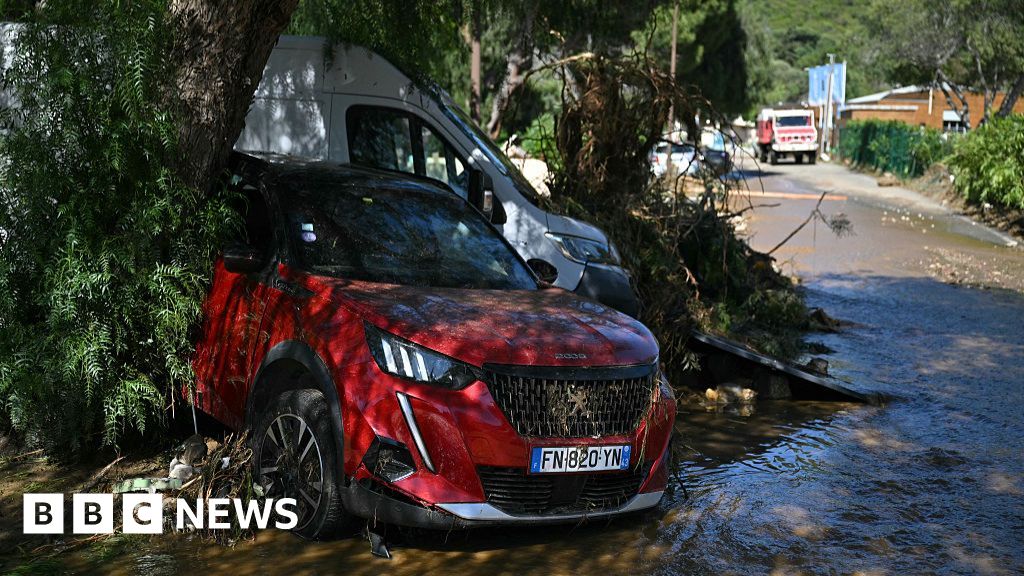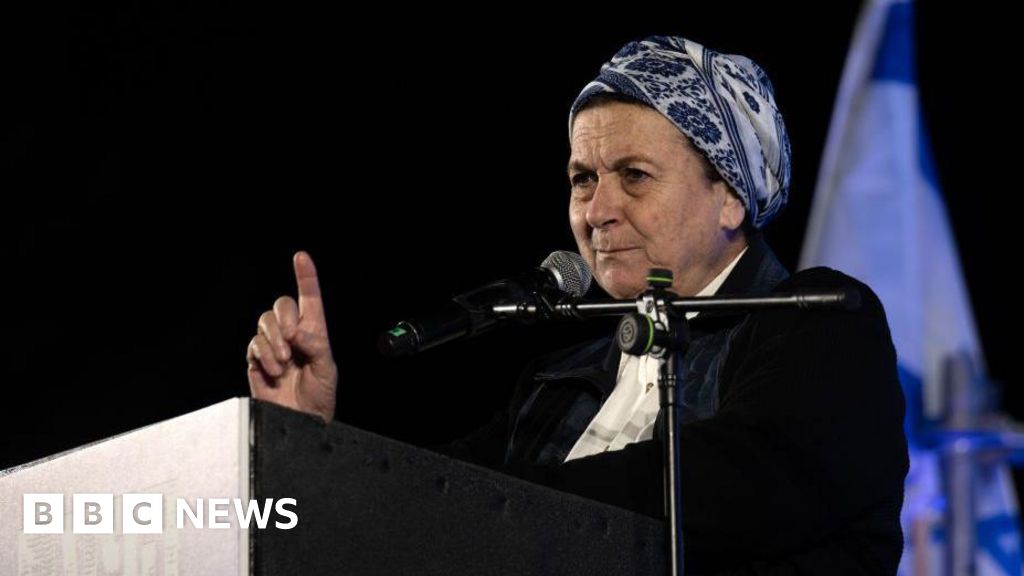ARTICLE AD BOX
By Hugo Bachega & Orysia Khimiak
BBC News, Lviv, Ukraine
Image source, Getty Images
Image caption,A school building that was partially destroyed by Russian shelling in the city earlier this month
The northern Ukrainian city of Chernihiv has been almost completely encircled by Russian forces and left without electricity, gas or running water. Tens of thousands of people remain trapped. Some have described civilian buildings and residential areas being deliberately targeted.
The strikes are so frequent that Anna and her husband take turns in watching the sky. He does the nights, she does the mornings. "The attacks are extremely loud. The building and windows shake a lot," she said. It is impossible to sleep. "Only when you're exhausted, because your brain just turns off."
The couple, and probably everyone else left in Chernihiv, spend most of their time hiding behind thick walls. "Thank God we have them," Anna said. Their son, who is 12, rarely ventures outside. "He's in panic. Many children are afraid of going out."
Chernihiv, located on the banks of the Desna River, was one of the first targets for Russian troops who invaded Ukraine from Belarus, hoping to quickly reach the capital Kyiv, just 144km (90 miles) to the south. A month on, that has not happened, and they have now effectively surrounded the city.
Civilians are trapped with no running water, electricity and heating, and under relentless bombing and shelling. And like Mariupol, the besieged city on the Sea of Azov that has seen the worst of Russia's brutality, very little seems to remain untouched.
Hospitals. Schools. A cinema. The stadium. Historic and residential buildings. All attacked, Anna said.
"They hit [sites] two times in a row. It's obvious they do it on purpose," she said. "Most of the city suburbs are completely destroyed."
Image source, Getty Images
Image caption,A number of residential areas in Chernihiv have been heavily damaged by Russia's attacks
Olena, another resident, said the only thing still standing from the cinema was its façade. "It's destroyed. Totally. I saw it with my own eyes".
"In the suburbs, there were only private buildings. My friends say they are all totally destroyed," Olena said. (The names of the civilians interviewed for this story have been changed to protect their identities as they remain in the city.)
Most days, Olena walks, sometimes for more than an hour, in search of drinkable water. She often has to endure long queues, as people bring bottles and buckets at distribution points organised by the city council. Supplies are running out, and each person is allowed to have only 10 litres.
Without electricity, the only way for her and others to charge their phones and power banks is when one of her neighbours lets them use his generator. Gas has also been cut, meaning there is no heating. "We don't even talk about it," she said, "because it's now part of our routine".
Image source, Reuters
Image caption,Ruins of the city's historic Hotel Ukraine, which was destroyed by an airstrike
Vladyslav Chaus, the governor of Chernihiv state, said half of the city's population of 280,000 had left since the start of the war. After Russia bombed a bridge on a road to the capital last week, Chernihiv had been "cut off", he said, and residents had nowhere to go, including those requiring treatment for wounds caused by the attacks. "There is no safe way out."
Russia was attacking the city "every 10 or 15 minutes", Chaus said, and civilian facilities were being hit "on purpose". "They have targeted residential buildings, schools, hospitals, kindergartens and the stadium," he said. It is difficult to independently verify information in Chernihiv, although residents' accounts, pictures and satellite images corroborate some of his claims.
Mariia, who remains in the city, said she believed there was no area that had not been hit. "A lot of hospitals and schools were attacked," she said. "A school was attacked twice in a single week."
Russia has denied targeting civilian sites in Ukraine. But its attacks on countless apartment blocks and other non-military facilities have been well documented across the country.
In a single attack on 3 March, 47 people including nine women were killed as they gathered in a small square in the city, the state government said. Human rights group Amnesty International said the attack was mostly likely a Russian air strike in which at least eight unguided aerial bombs, known as "dumb bombs", were used.
"Amnesty International was not able to identify a legitimate military target at, or close to, the scene of the strike," the group said. "[We believe] the majority of victims were queuing for food when the missiles struck."
Image source, Maxar Technologies via Reuters
Image caption,Satellite image taken on 16 March shows a sports training centre damaged in the city
Image source, Maxar Technologies via Reuters
Image caption,This image shows a destroyed Epicenter K shopping centre on 10 March
Chaus, the governor, said about 200 people had already died in Chernihiv, probably an underestimate. Some bodies were believed to remain under the rubble of collapsed buildings, he said, and "we're still trying to collect them".
Mariia's family live in constant panic. "We stay in the bunker all the time," she said. "We hear the attacks very well."
Anna said she was in "survival mode". "I'm just very focused. I know when there is bombing I need to get into a safer place," she said. "I no longer have fear."

 3 years ago
39
3 years ago
39








 English (US) ·
English (US) ·